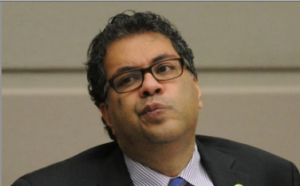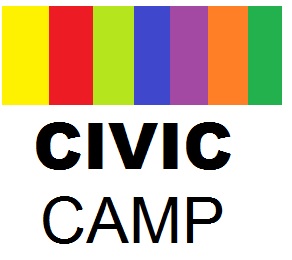Most of the ImagineCalgary document delves into areas that are completely outside of municipal jurisdiction (for now). That in itself indicative of just how much Naheed Nenshi and Brian Pincott who are among the authors of the document such plan to expand the size and reach of our city government at any cost. In this installment I will go into their plans for housing which at least is directly within the scope of a municipal government though the plans are no less extreme and unrealistic. I will get back into their plans for our children’s collective self-esteem in the document in later posts (yes they even go there).
The depth of the density zeal is evident in the sudden firing of planner Stan Schwartzenberger in order to make room for the controversial density extremist Rollin Stanley. Schwartzenberger sued the city of Calgary asking for $640,000 and eventually settled for an undisclosed amount that doubtless is well into six figures.
Rollin Stanley has quickly gotten to work and has alienated citizens and developers alike with statements as ridiculous as comparing Calgary to Stockton California as he tries to make his case for an extreme civic density agenda. That prompted homebuilder Avi Amir to take out an article to correct Stanley’s hogwash which of course brought on the increasingly petulant wrath of Nenshi who does not care for the exposure of his hired density zealots such as Rollin Stanley.
Now, back to the crazy $3.4 million dollar Calgary city plan called ImagineCalgary:
HOUSING
Goal:
Calgarians have a choice of housing options that are affordable, accessible and eco-efficient and that support a variety of lifestyles. Housing reflects local environmental conditions and resources and is adaptable over time to reflect changes in technology, climate and demographics.
The housing section begins with the fluffy statement above. What is lost is that such a choice already exists in the free market. People can buy homes at whatever price range, accessibility and eco-efficiency that they like. Not all people are in a position to afford all choices but that is covered in later sections where ImagineCalgary feels that the city government should control income levels in Calgary.
STRATEGY 1
Support an increase in residential density, particularly in strategic locations at transit stations, in employment areas and close to goods and service providers.
Change the Municipal Development Plan policy to allow higher densities within new communities.
Communicate/increase awareness of the ecological impacts of low-density housing.
Develop housing intensification policies for strategic locations (e.g. near LRT stations and employment areas).
They get straight to the point of increasing density which is unsurprising. There is nothing wrong with straightforward goals. As the document continues though, the motive and means become more apparent and disturbing.
The MDP does not need to be changed to “allow” more density in newer communities. The battle in new developments is to try and spread homes out as it is. “Sprawling” developments are labelled as “crap” by Mayor Nenshi as he defends the essential abuse of the regulatory system in order to hinder developments that don’t fall within his density vision. The city does not want to “allow” more density, they want to force it. That is a huge distinction.
Part of the plan is in “increasing awareness” of the apparent ecological merits of Manhattan style density. That means spending our tax dollars to “educate” and shame our suburban butts for daring to live in homes with yards.
STRATEGY 2 Increase the mix of uses within communities.
Encourage livable streetscapes that are active throughout the day.
Educate consumers to increase awareness of different housing types and mix.
Develop of standards for complete communities.
Promote existing mixed-use developments in Calgary.
Develop mandatory design guidelines.
Revise City policies that restrict opportunities for the development of mixed uses.
None of the above is all that unreasonable. They are coming out and using the word “mandatory” at least rather than talking around it using the word “encourage” as they usually do. They feel that they must “educate” us unwashed folks further though which is condescending and irritating.
Planning communities and having city enforced standards is a reasonable thing. It is a matter of the degree of course and the use of guidelines to throttle “crap” as Nenshi likes to do that is a problem.
STRATEGY 3 Support the development of underdeveloped land for population-intensive activities and uses.
Support changes to the tax system to encourage the development of vacant lands within established areas.
Provide mortgages, guarantees and revolving loans for brownfield sites that meet restoration criteria.
Support the remediation and redevelopment of brownfield sites for appropriate development.
Encourage the redevelopment of greyfield sites (old malls and commercial sites that are no longer economically viable).
Support the intensification of existing communities, particularly in strategic locations like those near transit stations.
Whoa whoa whoa folks! I have to quote this again below as this is the sort of thing that leads to disasters and government bankruptcies.
“Provide mortgages, guarantees and revolving loans for brownfield sites that meet restoration criteria.
That’s right, the ImagineCalgary folks actually want the City of Calgary government to provide loans and mortgages as well as guarantee other high risk loans. The loans in question would of course have to be high risk or they would not need a guarantee in the first place.
It is not enough to choke and regulate developments that do not fit within their density visions. The visionaries behind this document understand that it is economically unviable to invest in their ideal communities thus they must provide taxpayer financing to build these developments.
One needs only to look at the outright fiscal disaster South of our border to see what happens when government gets into the mortgage business. Lending institutions have come up with their lending standards for damn good reason. If people don’t qualify for a loan with established lending institutions, then they simply should not be loaned money.
We are not paying our tax dollars so that the City of Calgary can lend them to high risk borrowers!
What is this supporting changes in the tax system about? One can only imagine that it would be selective tinkering with rates so that preferred development gets breaks while we tax the piss out of those evil folks in the suburbs. The city is prepared to fight consumer choice and supply and demand with every tool at their disposal.
“Encourage” and “support” are terms for some very heavy market meddling with a very high risk of loss of tax dollars invested according to ImagineCalgary.
STRATEGY 4 Promote innovative housing forms that are able to adapt to a variety of housing needs.
Support backyard infill housing (e.g. granny suites).
Encourage co-housing or other forms that provide innovative living arrangements.
Encourage flex-housing to enable the spaces within residential units to be converted over time to meet changing household needs.
Support streamlining processes for housing developments that are innovative and support more sustainable lifestyles.
Develop a provincial strategy to address the shortfall of affordable and accessible housing for people with disabilities.
Now with this statement we have to wonder to what extent “promote” goes to. More education for us? More loans and subsidies?
Infill housing can be a good thing but the degree has to be watched. Parking and general neighborhood densities are real issues despite the utopian bicycle and pedestrian’s paradise envisioned by these planners. Those who purchase a home with a yard in an area with other single occupancy dwellings do so for a reason. It is not reasonable that they suddenly have a neighbor who tosses in an infill and basement suite and suddenly has groups of revolving renters coming and going.
This apparent supporting of streamlining of processes that are “innovative” and fit within what they define as “sustainable lifestyles” is an admission that the city wants to purposely abuse the regulatory regime to model things to fit within their idealism. Either streamline all regulations or none. The selective route is just a disingenuous means to choke supply and demand.
What exactly is a “sustainable lifestyle” anyway and who the hell are these guys to tell us what that is? The City of Calgary endorsed ImagineCalgary plan actually takes it upon itself to manage our choice in lifestyles. Again, the term social engineering is not at all an exaggeration here.
This calls for “developing a provincial strategy” as well. These people don’t even consider for a second that this is a civic document. What other municipalities do is none of your damn business. Rest assured the pap within ImagineCalgary is intrusive enough without trying to expand to controlling other cities.
STRATEGY 5 Review the rules for housing construction and community development to determine how they may be unnecessarily limiting innovative housing options.
Develop flexible rules within the Land Use Bylaw (create opportunities for mixed use, building setbacks, etc.).
Explore options to streamline the permitting process to encourage desired housing forms and make them more financially feasible.
Review the Alberta Building Code to identify how it may be limiting innovative housing options.
Research the appropriateness of alternative policy mechanisms, such as objective-based policy versus prescriptive-based policy.
Research options for alternative housing forms, such as legalized basement suites.
Research options to improve the Ward system of political representation.
Develop “flexible” rules? Either we have solid rules or we don’t. Selective application of rules means no rules at all but it sure does empower City Hall to pick and choose who they will or won’t enforce laws upon. Again, in knowing that consumer choice does not allow for their goals in city modelling the planners here want to take a disingenuous, backdoor route to their objectives.
Streamlining permitting to encourage desired housing forms? How about streamlining it all? Yet again these people want to abuse regulatory systems in order to force development into ways that would not normally happen. Maybe these developments are not “financially feasible” for a reason. Financial feasibility has never been a real priority for the kind of folks who built ImagineCalgary though, remember Druh Farrell’s name is attached to it.
The looking into options to improve the Ward system of representation is a neat one. What is at issue for the drafters of ImagineCalgary here is that due to the rep-by-pop nature of the Ward system, our city gets properly represented by the majority of the population which predominantly resides in the suburbs. Suburbanites are tiring of the demonization coming from city hall and they will clearly wake up electorally as the kind of goals such as the ones in ImagineCalgary are pursued. To get around this pesky democracy things, the ImagineCalgary bunch want to change the whole system of local representation. Why else would they mention revising the Ward system under the heading of housing? There is already an entire section on governance in ImagineCalgary that I will eviscerate later.
TARGET By 2036, all new and retrofitted residential buildings are built to be within five per cent of the highest energy-efficient design available out of all economically competitive products, as measured on a life cycle basis.
Want to see a great way to drive cost of living right through the roof? The above statement is the way to do it. Don’t believe that “economically competitive” statement for a second, they have ignored that principle in the entire plan. Why would they care what is economically competitive now?
STRATEGY 1 Develop education and awareness programs that identify the benefits of eco-efficient design.
Identify the ecological impacts of different forms of commercial development.
Provide benchmarking to indicate how eco-efficient non-residential buildings are and where we rank against other cities of similar size and characteristics.
Develop a system to rate commercial types according to eco-efficiency standards.
Develop a single comprehensive labelling system for “green” buildings, products and technologies.
Most of the above is not all unreasonable. It really all depends on how extreme the standards get set at.
The labelling system sounds like a disaster though and working towards potential shaming of businesses that fall outside of what the city considers as “green”. Really not their turf.
STRATEGY 2 Streamline the development approval process for buildings that demonstrate eco-efficient standards.
How about just setting standards and following up on them? Why the constant call to use the approval and permitting process as a hammer?
STRATEGY 3 Develop incentives for adopting eco-efficient standards in buildings and site design.
Consider subsidies for eco-efficient buildings and site design.
Provide financing incentives for buildings that are more energy efficient.
Support local groups and businesses that offer green building products and technologies through information and awareness packages.
Ahh we knew they couldn’t last too long before wanting to jump right into direct subsidies for businesses that they determine to be green.
We can’t let these people begin picking and choosing businesses to give our tax dollars to. Corporate welfare is bad enough on the federal and provincial levels. We do not need the city to piss our money down this road.
There are few realms that invite corruption better than giving government power to directly subsidize businesses. If these efficiencies are so good, rest assured businesses will be pursuing them even without having our tax dollars lavished upon them.
Wonder why our city is so deeply in debt while our road infrastructure languishes? This is a good indicator. The city feels it is mandated to spend however and wherever they please.
TARGET By 2036, all commercial buildings are accessible to people with disabilities.
A good enough goal. It depends on how much it would cost with some existing buildings though. A degree of grandfathering has to be allowed here.
TARGET By 2036, all Calgarians have the option of spending less than 30 per cent of their gross family incomes on housing.
Now this is quite the target. An irony (or idiocy) of this kind of goal being in ImagineCalgary is that high density cities all have huge housing costs. Have a look at housing costs in Manhattan or San Francisco to see what happens when you build a density paradise. It is through the expansion of a city as a whole that housing costs are kept under control. This is totally lost on ImagineCalgary though.
STRATEGY 1 Encourage innovative practices or standards that reduce the costs of new housing.
Explore modified parking standards to reduce housing costs, especially where housing is close to transit, pathways or employment.
Research if quotas could be applied to affordable housing.
Ensure a certain percentage of rental units are for low-income households.
Investigate options for setting land aside for affordable housing.
Research options for providing more affordable housing, such as legalized basement suites.
Establish policy and land use districts to support single-room occupancy units.
Support programs that help integrate affordable housing into the community at large.
Support an increase in funding for programs that meet the complex needs of those who are at risk of becoming homeless.
Support the construction trades to ensure we have enough labour to fulfill the demands for housing construction.
Develop information and awareness on choosing the housing trades as a career.
Support streamlining processes for housing developments that are innovative and provide affordable housing.
Encourage mixed-income neighborhoods. Explore options for alternative financing to integrate affordable housing within all communities
OK where to begin. Many of these things are already happening. The only thing debatable is the degree. Do we really need to force the construction of a single-room occupancy building in an outlying suburb for example?
They do save the best at the bottom of their lists of strategies of course. Is it the city’s role to direct career choices of people? They appear to think so. Better to keep cost of living low and attract the tradespeople who will continue to be drawn to Calgary. These folks can’t let market determine such things though of course.
Next we get into “alternative financing”. This goes back to that call to have the City of Calgary provide mortgages and loan guarantees. Do you want the city to take your tax dollars to give to an unviable low income complex (future slum) to be developed next to the dream home you worked your ass off to buy? That I exactly what ImagineCalgary wants to do.
STRATEGY 2 Support the concept of a living wage for all Calgarians.
Identify a living wage standard for Calgary.
Develop awareness programs for employers on the benefits of paying employees a living wage.
Develop training programs that enable people to earn enough to afford housing and to sustain this affordability over time.
Now they are dipping deeply into the well of insanity again. The ImagineCalgary planners want to tell employers what they have to pay their staff.
“Living wage” could be anything these zealots determine. It need not be based in reality and it sure as hell won’t reflect market demand. Policies such as this would bring down the cost of living as businesses flock from the city to avoid these policies though. Doubtless we could look forward to more “incentives” for businesses that adhere to this living wage policy.
Training programs? It looks like our city will be opening trade schools and other sorts of post-secondary institutions too. Just how big do our civic officials think they can make city hall?
If we want affordable housing the answer is simple; open up the thousands of square miles of undeveloped land surrounding our city for development. The virtual suburban development freeze that we have right now is pushing real-estate prices through the roof.
STRATEGY 3 Support public/private partnerships to develop integrated affordable housing.
Encourage government to act as a land banker to absorb the risks of providing affordable housing in new communities.
Support streamlining processes for housing developments that are innovative and provide affordable housing.
Encourage mixed-income neighbourhoods
Ahh great. Our City Hall not only wants to become a banker that provides mortgages, it wants to become a “land banker”. Why simply risk tax dollars in cash when we can put whole tracts of city owned land at risk as well? Quebec has cracked down on their civic corruption lately. I bet their municipal gangsters would love to get a piece of these city business and land partnerships.
It is frightening how many ways these people can imagine to take our money and redistribute it based on their idealism.
By 2036, the Calgary market can meet the housing needs of those below the Low-income Cut-off (LICO).
Again a nice but frightening goal. We are talking about a massive civic welfare state here and nothing less. This simply is not a municipal government’s role.
STRATEGY 1 Fully integrate non-market housing into communities throughout the city, with a mix of rental, owned and mixed-income tenures.
Want an ever growing pile of government owned housing tenements opening up in your neighborhood? That is exactly what this is calling for. The theory is that if government owns enough of the housing that they can control the overall costs of housing for all. The cost to fund this will be through ever increasing taxation upon the productive of course which will drive more of them into low income situations creating need for more low income housing meaning more tradespeople will need to be trained in City owned trade schools…….. Big government just keeps getting bigger.
I was fortunate enough to have been able to tour Moscow in the 80s. I assure you that large cities full of socialized housing are not terribly pleasant.
STRATEGY 2 Increase the stock of affordable housing along the continuum: from emergency shelters, to transitional housing, to non-market rental units, to formal and informal rental units, to affordable owned homes.
Support the development of hostels and single-room occupancy dwellings like boarding houses, special care facilities and lodging houses.
Support the development of emergency and transitional housing to accommodate specific subgroups within the homeless population, including youth under the age of 18, families, women with or without children who are fleeing violence, people leaving addictions treatment and people with mental health issues or cognitive or physical disabilities.
Some of this is OK but how much? How many hostels are we obligated to provide for travelling hipsters with Liberal Arts degrees for example?
STRATEGY 3 Research and develop new ways of providing non-market housing.
Develop new ways of providing non-market housing in Calgary by having The City’s Affordable Housing Implementation Team work with the Community Action Committee addressing homelessness, the Community Land Trust and other partners in public, private and community sectors.
The repetitiveness of the goal of increasing state-owned housing is rather telling. ImagineCalgary see’s no other recourse for housing issues without massive state participation. This strategy has failed everywhere else but hey, lets let Calgarian taxpayers try just one more time.
STRATEGY 4 Identify specific buildings and parcels of land that can be set aside for the development of non-market housing.
Provide the option of subsidizing people, and not projects, to expand the supply of affordable housing.
Oh look, another strategy to pursue more state owned housing tenements. How creative of them.
STRATEGY 5 Bring together developers and non-profit organizations and guide them in seeking federal and provincial funding for the development and operation of affordable housing.
Well this is something interesting at least. They want to bring others with them when they go begging for more money from other levels of government. Nenshi may have a hard time getting those homebuilders to come with him if he keeps banning them from his committees when he has his periodic tantrums though.
STRATeGY 6 Support appropriate relaxations to regulations on a site-specific basis for development that meets the needs of low-income households.
Oh good, let the standards down on the low income developments. Hell, get rid of the smoke detector requirements and allow smoking within them. That should reduce our low income population right quickly.
We either need regulations for all developments or none.
STRATeGY 7 Support initiatives to eliminate homelessness.
Mobilize community partners and other orders of government to develop a comprehensive 10-year plan to eradicate homelessness that would lead to a shift from our current temporary/ transitional shelter approach to one that uses prevention combined with rapid re-housing and supportive housing practices.
Focus short-term efforts on families with children that are homeless or at risk of becoming homeless, as well as on children and youth at risk of becoming homeless later in life due to childhood housing instability.
Support a Mayor’s task force to reach out to vulnerable group at risk of becoming homeless.
Continue to introduce and support social programs that help the homeless become self-reliant.
Enhance programs and supports that help unemployed and low-income people achieve economic self-sufficiency.
Use a collaborative and shared investment approach with not-for-profit, industry and government sectors.
Provide adequate training or education and services for life skills development, job preparation and job placement to the homeless population and those at risk of becoming homeless.
Support various employment supports, including transportation subsidies, child care and eligibility for health benefits.
Support early childhood development that assists parents in providing children with healthy environments for full development.
Most of the above is standard fluff in speaking to homelessness. When they say “eliminate” though, reality is already lost. Homelessness can be mitigated and reduced but it will never be eliminated. If we don’t plan for realistic outcomes we will never see the ones we want. Many of the initiatives listed above are already in existence. The term “enhance” is used to mask a call for increased spending though.
As usual, ImagineCalgary goes way beyond civic mandate though in calling for child care and health benefits. Early childhood programs are not a municipal role either so lets just get off it.
Well, that is the ImagineCalgary housing dreams in nutshell along with interpretation and in only 4000 words. Writing on their self-esteem goals in a future installment will be a cakewalk after having written this one. 😉

















